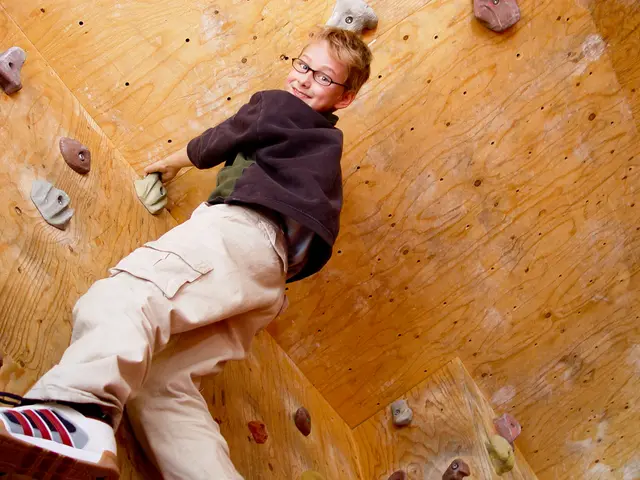Setting Off on the Portuguese Coastal Camino: A Journey Taken by Three Female Adventurers from Baiona to Santiago
The Camino de Santiago, a centuries-old pilgrimage across Europe, has captivated the hearts of many with its spiritual and transformative impact. Three intrepid women, Suruchi Kapur Gomes, Ashita Sawhney, and Deepika Quintas, embarked on this historic journey, starting from Baiona and tracing the Portuguese Coastal Camino through Spain.
Their journey was not without its challenges. Gusty winds and rain made visibility scant and rendered their gear ineffective. Yet, they persevered, buoyed by their determination and the camaraderie that blossomed along the way.
To prepare for this daunting adventure, the women planned meticulously. They packed light, with lightweight, comfortable, and quick-drying clothes, ensuring that their backpacks remained under 10% of their body weight. Trail running shoes, hiking sandals, and flip-flops for hygiene at accommodations were essential items in their arsenal.
Choosing the route wisely was crucial. The Camino Francés, the most popular and best-supported route, was their destination of choice, especially for first-time solo female pilgrims. They booked their first few Albergues (hostels) in advance, especially during peak season, to ensure accommodation.
Physical preparation was key. The women trained with knapsacks and built their stamina for long days on their feet. They set a comfortable daily pace, averaging 20-25 km, and didn't treat it as a race.
Safety measures were also prioritised. The women stayed connected with friends or family back home for safety and support. They carried blister plasters and other small medical supplies to manage foot care during the walk. Following safety-focused advice, such as being aware of their surroundings and trusting their instincts, was essential.
Through six towns in seven days, the women walked, doodling their way down the trail. Sometimes, they struggled to find the correct path due to missing yellow arrows or Google Maps failures. Yet, they encountered unexpected delights along the way, such as a pristine beach in Redondela where they met a violinist and a frisky mutt.
The women stayed in the charming Pension Jardin in Padrón, indulged in churros and chocolate, and learned of its literary legacy. In Caldas de Reis, they found thermal baths soothing for their aching feet. They stood at the Paseo Alfonso IX in Baiona, marveling at the replica of La Pinta, Columbus's ship.
The trail healed the women spiritually, physically, and mentally. They passed through Redondela, Pontevedra, Caldas de Reis, Pascal, and Padrón, each town offering its unique charm and challenges. In Pontevedra, they learned that disputes between the state and central government can delay signage on the trail.
The women's journey culminated in Santiago de Compostela, where they encountered a girl from Romania near collapse and a Great Dane named Maria Mel, who refused to budge after walking months on foot. Despite the challenges, the women's spirits remained unbroken. They had conquered the Camino de Santiago, a testament to their resilience and determination.
This adventure was more than just a physical challenge; it was a journey of self-discovery, friendship, and personal growth. The Camino de Santiago, with its spiritual and transformative impact, had left an indelible mark on these three women, a mark that will resonate in their hearts for a lifetime.
In the midst of their life-changing journey, the women embraced various aspects of their lifestyle, even incorporating health-and-wellness routines. For instance, they frequented thermal baths for soothing their aching feet, such as the ones found in Caldas de Reis during their pilgrimage.
Moreover, the women's adventure seamlessly blended elements of science, travel, sports, and health-and-wellness, as they trained diligently beforehand, engaged in trail running, and prioritized safety measures for a successful and safe voyage. They even experienced the thrill of sports when they encountered a Great Dane named Maria Mel, who had walked for months on foot before they met.





